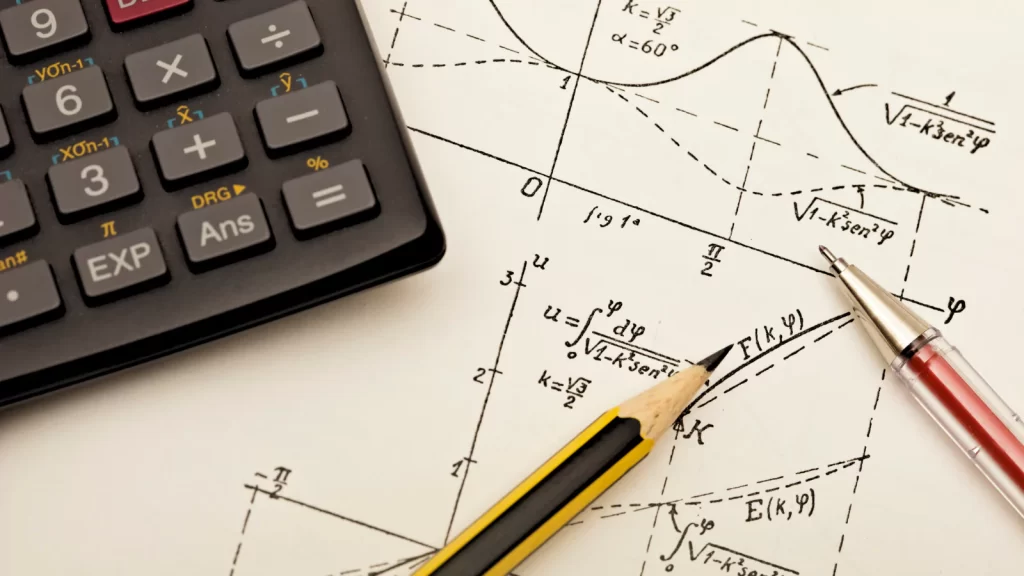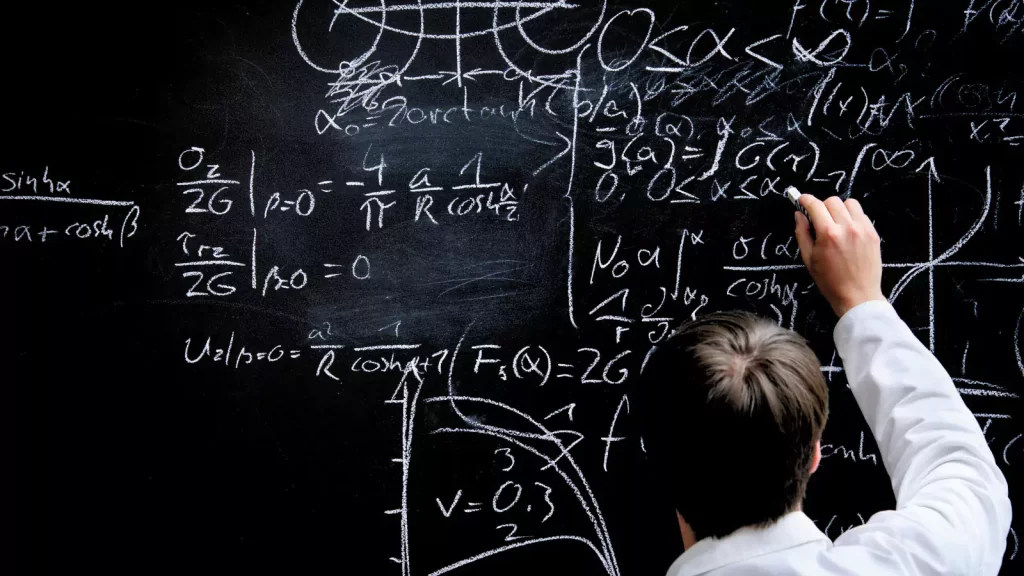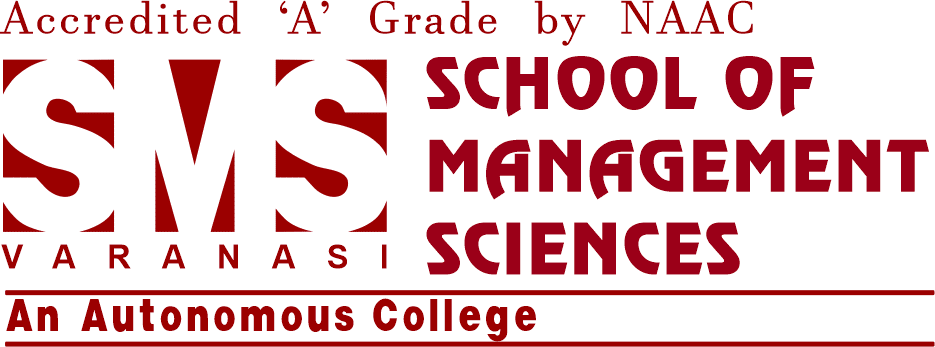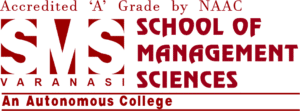Have you ever thought about how a computer thinks and solves complex problems? Well, the answer lies in Discrete Mathematics.
Discrete Mathematics is essential for computer science, cryptography, and algorithms etc.
Discrete Mathematics for MCA (Master of Computer Applications) requires strong foundational skills in proofs and a unique perspective on concepts like Venn diagrams, graph theory and other mathematical logic.
Discrete Mathematics is different from the mathematics we learn at school, as it only slides over the basics. Discrete Mathematics emphasises on deep understanding of those concepts that we learned earlier.
This blog covers some of the best study tips and effective strategies to master Discrete Mathematics for MCA students.
What is Discrete Mathematics?
Have you enrolled in the Master of Computer Applications programme? Then you must have surely come across Discrete Mathematics, where you deal with distinct objects (like sets of numbers) and their properties. One thing that’s most crucial in Discrete Mathematics is the order in which the items are arranged. Changing the order of elements results in a different arrangement, which is crucial in fields like cryptography, data organisation, etc.
One of the top study tips for MCA students is that one must use logic because in Discrete Mathematics you need to apply logical rules to understand relationships between different objects. You learn about statements, proofs, and constructing logical arguments.
Before we tell you how to study Discrete Mathematics, you should first know why you need to study it. It’s because many concepts of Discrete Mathematics apply to the world of computers directly. You need counting techniques to analyse algorithms and to master programming languages along with using logic repeatedly.
Many core MCA subjects like Algorithms, Data Structures, and Graph Theory use Discrete Math concepts. Set theory often comes in handy in data classification. Number theory is often used in cryptography and encryption techniques to safeguard our passwords and make our online world safer.
Besides this, studying this subject teaches you to approach a problem logically and solve it step-by-step – a valuable skill for a computer professional.
How to Study Discrete Math Strategically?

Embrace a Structured Schedule
Master of Computer Applications has a vast syllabus. We recommend you plan at least 2-3 hours of dedicated study sessions per week for each hour of lecture you attend (or two hours of practical classes you take). It will roughly translate to 6 to 9 hours of study per week.
You need to execute an effective study plan which incorporates everything from your classes to sleep. Don’t go overboard with your studies, rest is equally important to recharge your body and have a productive study session.
Active Learning in Class:
One of the most underrated MCA study tips is that you must attend lectures regularly and engage in classroom discussions actively. Do not hesitate to ask questions you don’t understand because believe us when we say, professors have heard it all. There are no silly questions that have not been asked before.
Seek clarification if you don’t understand something immediately, because a stitch in time saves nine. Not understanding one single concept can make it more challenging for you to grasp several other related concepts. Also, every day, after class, revisit your notes, fair them out, and attempt to plug in any information you missed or understand the concept still not clear to you. Active learning really helps; seek help from your professors and seniors if you are struggling.
Effective Pre-Class Preparation
For a subject like Discrete Mathematics, try to read the upcoming lesson and solve its exercises. It will give you an idea of what concepts you are struggling with. Hence, you will automatically pay more attention to them in class. Note down the questions you would like to ask your professor.
If you pay attention in class, you will find that the course lecture notes are often the most concise and concentrated notes designed to help you. Also, the questions discussed in class are often the most important ones from the exam point of view.
Actively learn definitions, properties, theorems, and formulas in Discrete Mathematics. If you get stuck with a tricky problem, do not waste more than 15 minutes on it. Revisit it later. Maybe learning some more concepts will make it easier for you to solve it.
Post-Class Practice Makes Perfect
Re-read your notes after class, and again before you do assignments. Redo exercises and do your revisions religiously to master Discrete Mathematics as an MCA student.
Discrete Mathematics Mnemonics for MCA Students
Number Systems
- Decimal (Base 10): Digits (the most familiar system based on 10 digits).
- Octal (Base 8): Octo (think “octopus” with 8 tentacles).
- Binary (Base 2): Bits (the language of computers, using 0s and 1s).
- Hexadecimal (Base 16): Hex (short for “hexagon” with 6 sides + decimal = 10).
- Pentary (Base 5): Penta (think “pentagon” with 5 sides).
Propositions and Logical Operations
Propositions:
- S.T.A.T.E.M.E.N.T.: Sentences that are True Absolutely True, Either Mistaken Entirely, Not True (a proposition is either true or false).
- ATOMIC: Atom – the Tiniest Observable unit (a proposition cannot be broken down further).
Logical Operations:
- AND (∩): Always Need Doth (both operands must be true for the result to be true).
- OR (∪): One or the Result is True (at least one operand must be true for the result to be true).
- NOT (~): Not the Opposite (flips the truth value of the operand).
Sets, Relations, and Diagraphs

Sets:
- C.L.E.A.N.: Collections of List Elements with A No duplicates (emphasises the core properties of sets).
- Venn Diagram: Visualise Elements Not Necessarily Near (highlights the use of Venn diagrams to represent sets visually).
Relations:
- A.R.R.O.W.: Arrows show Relationships between Related Objects in a Way (focuses on the directional aspect of relations).
- DOM-RAN: Domain – set of Objects the relation Maps A New set (highlights the domain and range of a relation).
Diagraphs:
- A.C.T.I.O.N.: Arrows Connect To Items, showing Operations or Navigation (emphasises the connections and representation of operations or flow in a diagraph).
Recurrence Relations
- B.A.S.E.: Base Case – the Starting point, Easy to solve (highlights the importance of the base case as the foundation).
- R.E.S.O.L.V.E.: Recursive Equation Solves the Older Less complex problem to get the Value (emphasises the core idea of solving a problem by breaking it down into smaller subproblems).
- STACK UP: Recursion works like a stack – Smaller problems are Tacked Above, solved Correctly, and Kept track of until the Ultimate answer is reached (illustrates the concept of function calls pushing and popping from the stack).
- I.N.D.U.C.T.I.O.N.: Identify the Nature of the problem, Decompose it into Unknown Cases, express the Transition from smaller to larger problems, and Induct the Overall solution (emphasises the problem-solving approach using mathematical induction).
- T.I.M.E.: (This Isn’t Magic, it’s Engineering): Recursion is a powerful tool, but Time and Iterations can lead to inefficiency. Methods like memoisation or iterative solutions can be explored for Enhanced performance (reminds students of potential drawbacks and alternative approaches).
Groups and Applications
Groups:
- G.E.M.: Group: an Equivalence relation where Members are Equivalent (emphasises the core properties of a group: closure, associativity, identity, and inverses).
- C.L.O.S.E.: Closure: operation within the Limit of the group, Output remains Still within the group, Ending up as a member (highlights the closure property of groups).
Applications:
- C.R.Y.P.T.O.: Cryptography: groups are used to create Robust sYstems for Privacy and Transaction Obsecurity (emphasises a prominent application in cryptography).
- C.O.D.E.: Compression: groups are used for Optimising data Density and Efficiency (highlights another application in data compression).
- G.E.O.M.: Geometry: groups play a role in Exploring Objects’ Motions and transformations (highlights the application in geometric transformations).
Classification of Languages
- C.H.O.M.S.K.Y.: This directly references the Chomski Hierarchy, a widely used framework for classifying languages based on their generative power.
- F.O.M.A.L.: Finite State Operators, Meaningful Analysis at a Limited level (highlights the characteristics of finite state automata, which recognise regular languages).
- C.O.N.T.E.X.T.: Context-free Operations Need To be Evaluated Xactly (emphasises the requirement of considering surrounding context in context-free grammars, which generate context-free languages).
- T.U.R.I.N.G = A.L.L.: Turing Machines can recognise and Understand Recursively Iterative Notions Generally (highlights the power of Turing machines, which can recognise all computable languages).
- R.E.C.U.R.S.I.O.N = R.E.G.U.L.A.R? A Recursive Evaluation might not always be Clear if it’s Ultimately a Regular Structure (reminds students that even though recursion can be used in some regular languages, it’s not the sole defining characteristic).
Mathematical Logic

- T.A.U.T.O.L.O.G.Y.: True Always, Under any Truth value combination, Obviously Logical (emphasises that a tautology is always true regardless of variable values).
- C.O.N.T.R.A.P.O.S.I.T.I.O.N.: Conclusion is the OPPOSITE of the POSitive’s CONtrapositive (highlights the structure of a contrapositive implication, where the converse of the inverse implication is logically equivalent).
- D.E.M.: De Morgan’s Equivalences: NOT (A OR B) is the same as (NOT A) AND (NOT B) (represents De Morgan’s Laws in a concise way).
- V.A.L.I.D: Valid argument has a Always Logically Implying Deduction (focuses on the core characteristic of a valid argument: a conclusion that necessarily follows from the premises).
- Q.U.E.S.T.I.O.N.: Quantifiers (universal and existential) Underlie Each Statement To Identify Occurrences and Negations (emphasises the role of quantifiers in specifying the scope of variables in propositions).
Relations
- A.R.R.O.W.: Arrows show Relationships between Related Objects in a Way (emphasises the directional aspect of relations).
- D.O.M-RAN: Domain – set of Objects the relation Maps A New set (highlights the domain and range, crucial aspects of a relation).
- O.R.D.E.R.: Ordered pairs define a relation: (Related 1, Related 2). (focuses on the concept of ordered pairs as the fundamental building blocks of relations).
- F.U.N.C.T.I.O.N.S.: Functions are a Unique type of relation where each element in the Ndomain maps to Certainly To one element in the Image (highlights the special case of functions within relations, where each domain element has a unique corresponding element in the range).
- C.A.R.T.E.S.I.A.N P.R.O.D.U.C.T.: Cartesian Product of two sets Results in the set of all possible Ordered pairs (highlights the construction of the Cartesian product, which forms the basis for defining relations).
Semi Groups and Groups
- S.E.M.I.: Semi Equals Multiplication Inverses (highlights the closure property under multiplication and the lack of inverses for all elements).
- G.R.O.U.P.: Group: Relations define a Operation with Uniform Properties (emphasises the core properties of a group: closure, associativity, identity, and inverses).
- NO inverse FOR ALL (focuses on the key difference between semi-groups and groups – the absence of inverses for all elements in semi-groups).
- G = S + INVERSES: Groups are Semi-groups Added with INverses (represents groups as an extension of semi-groups with the additional property of having inverses for all elements).
- PARTY (elements) LIKE FRIENDS (inverses exist):
- PARTY: Represents a group (closure, associativity, identity, inverses).
- FRIENDS: Everyone has a “friend” (inverse) in the group. (Figuratively emphasises the existence of inverses for all elements).
Coding
- D.R.Y.: Don’t Repeat Yourself (emphasises the importance of code reusability and avoiding redundancy).
- B.U.G.: Begin Understanding Goodly (encourages students to approach code with a clear understanding of the problem and desired outcome).
- KISS: Keep It Simple Stupid (highlights the value of writing clear, concise, and easy-to-understand code).
- I.N.P.U.T.: Identify Necessary Parameters, Understand their Types (emphasises the importance of defining clear input parameters and understanding their data types).
- T.E.S.T.: Through Extensive Scrutiny and Testing (highlights the crucial role of testing code thoroughly to ensure functionality and identify potential errors).
Graphs

- V.E.R.T.I.C.E.S.: Vertices are the Endpoints, Representing The Information Centers of the graph (highlights the role of vertices as the fundamental units holding data).
- E.D.G.E.S.: Edges Depict Graph Elements Showing Connections (emphasises the role of edges in representing connections between vertices).
- A.D.J.A.C.E.N.C.Y M.A.T.R.I.X.: A square matrix where rows and columns represent Distinctive Junctions (vertices), with A Cells indicating Existence of Neighbors (connections) and their Corresponding Yalues (weights/attributes).
- D.E.G.R.E.E.: Degree of a vertex refers to the Edge Group Related to it (highlights the concept of degree as the number of edges connected to a vertex).
- P.A.T.H.: Path is a Assembly of Transversing Hops (connected edges) leading from one vertex to another (emphasises the concept of a path as a sequence of connected edges).
Language and Finite State Machines
- L.A.N.G.U.A.G.E.: Lexical Analysis, No Grammatical Units, Automata for Generating End products (emphasises the role of FSMs in recognising basic language patterns without complex grammar rules).
- F.S.M.: Finite set of States, Moving based on Inputs (highlights the core characteristics of FSMs: limited states and transitions based on symbols).
- T.R.A.N.S.I.T.I.O.N.S.: Transition function takes the Running state and an Anput Nsymbol, leading to a Successor state and potentially an Input Tape Output (represents the core operation of FSMs where the state changes based on input and may produce output).
- A.C.C.E.P.T.: Accepting state – the Conclusion point where the input string is Considered Eligible based on the FSM’s transitions (focuses on the state where a valid input sequence is recognised).
- COFFEE (Complete, Observable, Finite, Functional, and Evolving): This playful mnemonic emphasises desirable properties of FSMs:
- Complete: Transitions are defined for all possible inputs in all states.
- Observable: Outputs depend solely on the current state and input symbol.
- Finite: A limited number of states exist.
- Functional: The transition function has a clear behaviour.
- Evolving: FSMs can be combined or extended for more complex scenarios
Conclusion
By adopting these effective study strategies, actively engaging in class, and utilising the available resources, you can successfully navigate the intricacies of Discrete Mathematics.
Remember, consistent practice, a willingness to learn, and seeking clarification when needed are key to mastering this subject and laying a strong foundation for your MCA endeavours.
Read Also – The Rise of AI-Generated News Anchors: Are Human Journalists Obsolete?
Ace Law School Exams: Smart Study Techniques for Students

